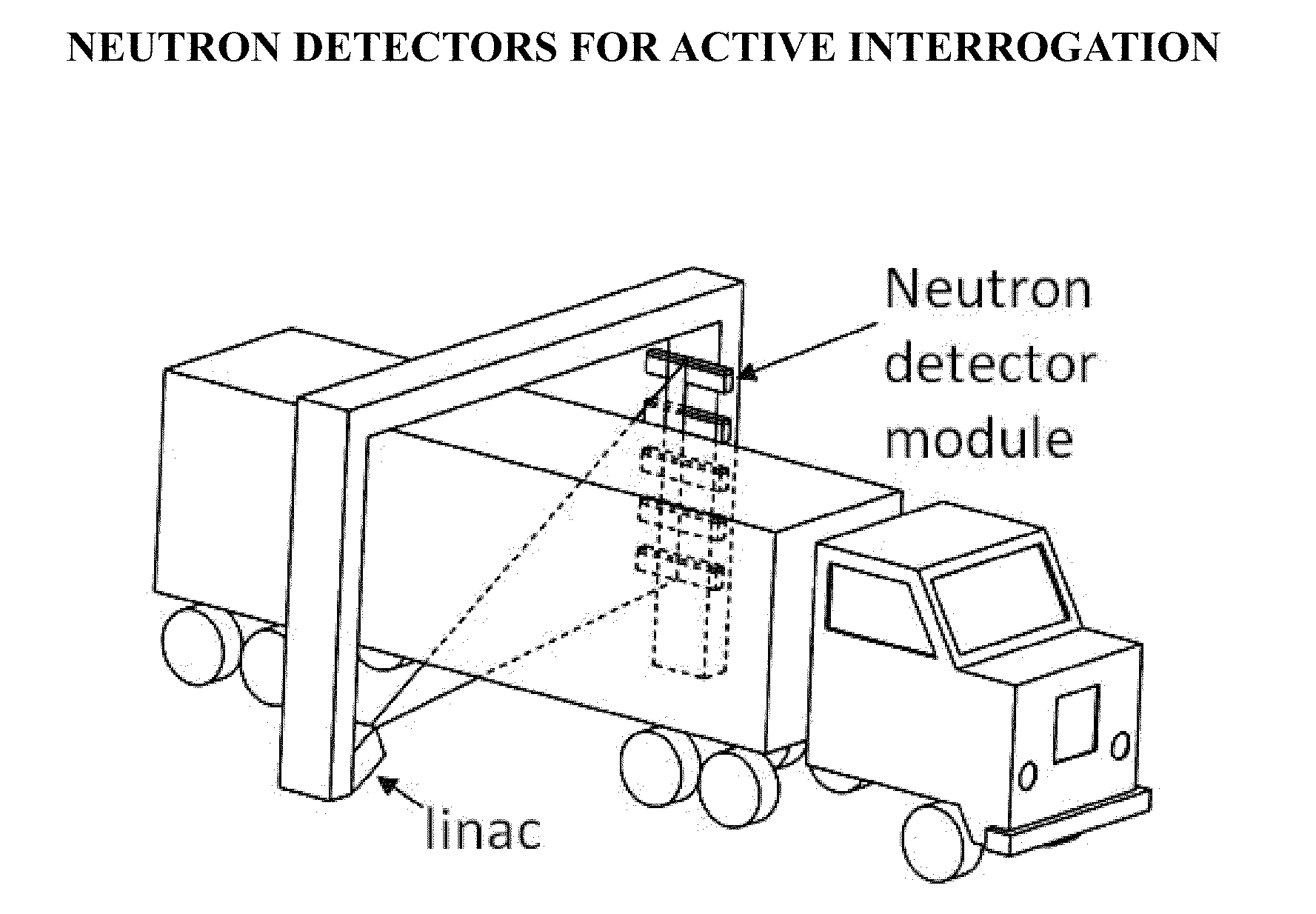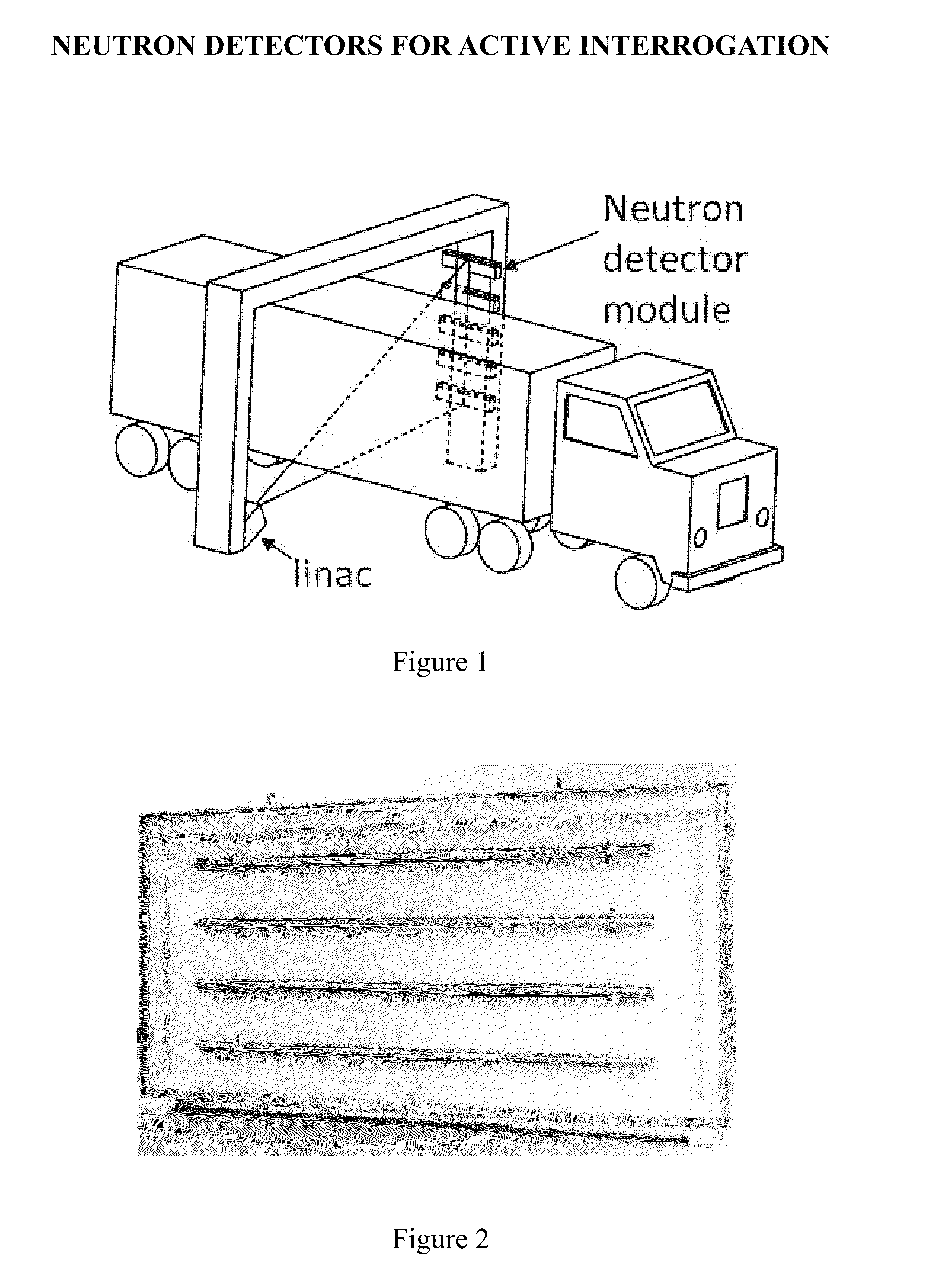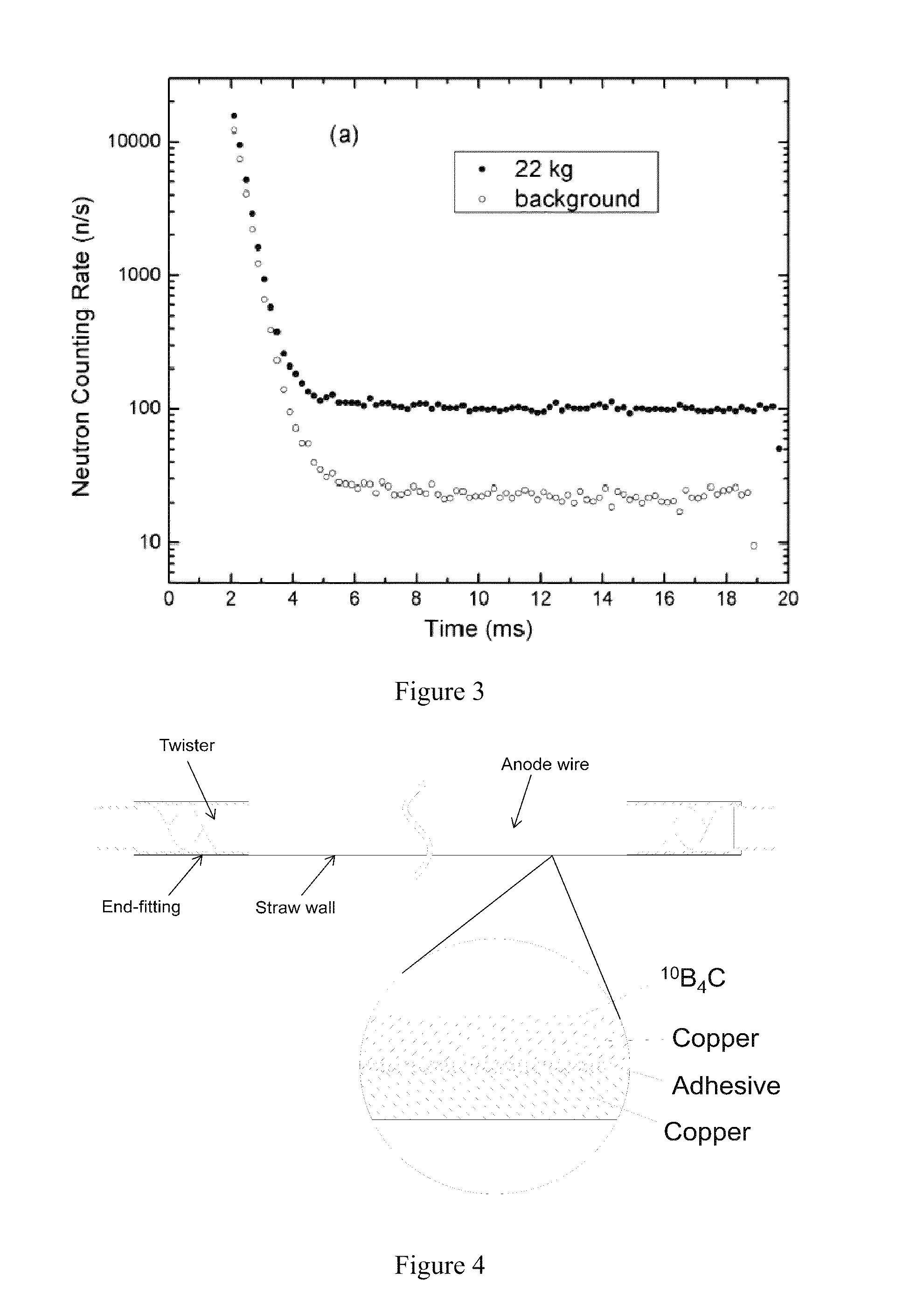Neutron Detectors For Active Interrogation
a neutron detector and active interrogation technology, applied in the field of radiological detection, can solve the problem of severely limited linac pulse rate, and achieve the effect of increasing the pulse rate and fasting the ion collection tim
- Summary
- Abstract
- Description
- Claims
- Application Information
AI Technical Summary
Benefits of technology
Problems solved by technology
Method used
Image
Examples
Embodiment Construction
[0031]En embodiment of the present invention is based on long copper tubes (“straws”), 4 mm in diameter, and up to 2 m in length, coated on the inside with a thin layer of 10B-enriched boron carbide (10B4C), as shown in FIG. 4. Thermal neutrons captured in 10B are converted into secondary particles, through the 10B(n,α) reaction:
10B+n{ 7Li+ 4α2.792MeV(groundstate) 7Li+ 4α2.310MeV(excitedstate)
[0032]The reaction products, namely an alpha particle (α) and a lithium nucleus (7Li) are emitted isotropically from the point of neutron capture in exactly opposite directions and, in the case of the dominant excited state, with kinetic energies of 1.47 MeV and 0.84 MeV, respectively (dictated by the conservation of energy and momentum). Since the boron carbide layer is very thin, typically 1 μm, one or the other of the two charged particles (whichever is directed inward) has a high probability to escape the wall and ionize the gas contained within the straw. In an argon-based gas used for co...
PUM
 Login to View More
Login to View More Abstract
Description
Claims
Application Information
 Login to View More
Login to View More - R&D
- Intellectual Property
- Life Sciences
- Materials
- Tech Scout
- Unparalleled Data Quality
- Higher Quality Content
- 60% Fewer Hallucinations
Browse by: Latest US Patents, China's latest patents, Technical Efficacy Thesaurus, Application Domain, Technology Topic, Popular Technical Reports.
© 2025 PatSnap. All rights reserved.Legal|Privacy policy|Modern Slavery Act Transparency Statement|Sitemap|About US| Contact US: help@patsnap.com



